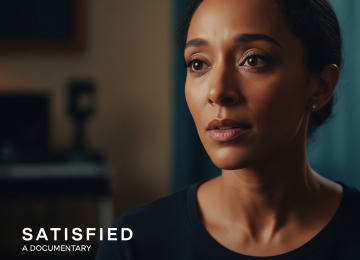ILM’s Illusionary Artistry: ‘Long Story Short’ Delivers Jewish Wisdom with a Side of Visual Magic
The realm of cinematic storytelling has long been a canvas for the extraordinary, a place where the impossible is rendered tangible, and the mundane is imbued with wonder. At the forefront of this visual alchemy stands Industrial Light & Magic (ILM), a titan of special effects that has consistently pushed the boundaries of what audiences thought achievable on screen. This year, ILM’s groundbreaking artistry finds an unlikely, yet profoundly moving, showcase in the independent film “Long Story Short,” a delightful and insightful exploration of Jewish culture, tradition, and the universal human quest for meaning.
The Enduring Magic of Industrial Light & Magic
For decades, ILM has been synonymous with groundbreaking visual effects. From the groundbreaking spaceships of “Star Wars” to the fantastical creatures of “Jurassic Park” and the intricate digital worlds of “Avatar,” ILM has consistently redefined the cinematic landscape. Their commitment to innovation, coupled with an unwavering dedication to storytelling, has earned them legions of fans and a mantelpiece groaning with accolades. The sheer technical prowess and artistic vision required to create these immersive experiences are a testament to the collaborative spirit and meticulous craftsmanship of thousands of artists and technicians. Each frame is a testament to countless hours of work, from conceptualization and modeling to animation, compositing, and final rendering. The company has fostered a culture of relentless experimentation, encouraging its artists to embrace new technologies and find creative solutions to complex visual challenges. This iterative process, often involving numerous prototypes and refinements, ensures that the final output is not just technically sound but also emotionally resonant and seamlessly integrated into the narrative. The name ILM has become a shorthand for cinematic excellence, a guarantee that the audience is in for a visual treat that elevates the storytelling beyond mere special effects. Their influence extends far beyond the films they’ve worked on, shaping the very language and aesthetic of modern filmmaking.

‘Long Story Short’: A Modern Tale Rooted in Ancient Wisdom
“Long Story Short,” directed by Josh Radnor, might not be the typical blockbuster fare that usually dominates ILM’s portfolio. However, its profound narrative and touching portrayal of a young man grappling with his identity and heritage provide a unique opportunity for ILM to flex its creative muscles in a more nuanced, yet equally impactful, way. The film centers on Teddy (Rafe Spall), a young Jewish man living in New York City, who finds himself experiencing his life backward, reliving key moments in reverse chronological order. This surreal premise allows Teddy to re-examine his relationships, his choices, and his understanding of his Jewish faith and family. The film cleverly uses its unconventional structure to explore themes of regret, forgiveness, and the cyclical nature of life, all viewed through the lens of Jewish tradition and familial bonds. The narrative gracefully weaves in elements of Jewish history, philosophy, and religious practice, offering a glimpse into a rich cultural tapestry. The film’s warmth and humor are infectious, making its philosophical musings accessible and engaging for a broad audience. It’s a story that resonates with anyone who has ever reflected on their past, questioned their present, or pondered their future.

The Subtle Art of Illusion: ILM’s Contribution to ‘Long Story Short’
While “Long Story Short” is not an action-packed spectacle, ILM’s involvement is crucial in realizing the film’s unique temporal conceit. The seamless transition between different time periods, the subtle aging and de-aging of characters, and the creation of immersive, historically accurate environments are all made possible through ILM’s sophisticated visual effects. The company’s artists have employed their expertise to ensure that the visual storytelling enhances, rather than distracts from, Teddy’s emotional journey. For instance, the film’s nonlinear structure necessitates careful visual cues to signal the passage of time and the shifting of Teddy’s age. ILM’s team has masterfully employed subtle digital enhancements to achieve this, ensuring that the audience remains grounded in Teddy’s experience. Beyond these temporal transitions, the film also subtly uses visual effects to evoke the passage of time in a more traditional sense, showing the subtle wear and tear on objects, the changing seasons in a city, and the gradual evolution of urban landscapes. These seemingly minor details contribute to the overall verisimilitude of the film, allowing the audience to become fully immersed in Teddy’s world. The challenge for ILM here wasn’t about creating overt spectacle, but about employing their advanced techniques to serve a deeply human story. This often requires a greater degree of subtlety and finesse, as the effects must be invisible, seamlessly integrated into the fabric of the narrative. The goal is to create a believable reality, even within a fantastical premise, and ILM’s artists have demonstrated their mastery in achieving this delicate balance.

Exploring Jewish Identity Through a Cinematic Lens
“Long Story Short” offers a unique opportunity for audiences to engage with Jewish culture and traditions in a relatable and accessible way. Teddy’s backward journey forces him to confront his heritage, his family’s history, and his own place within the Jewish community. Through his experiences, the film explores key aspects of Judaism, such as the importance of family, the concept of teshuvah (repentance and return), and the wisdom found in Jewish texts and traditions. The film doesn’t shy away from the complexities of faith or the challenges of maintaining religious and cultural identity in a modern world. Instead, it embraces these elements with warmth, humor, and intellectual curiosity. Viewers are treated to glimpses of Shabbat dinners, Passover Seders, and discussions about Torah, all presented in a way that feels authentic and personal. The film highlights the enduring power of tradition to provide guidance, comfort, and a sense of belonging, even amidst life’s uncertainties. It’s a celebration of intergenerational connections, showcasing how the wisdom of the past can illuminate the path forward. The narrative cleverly uses Teddy’s reversed timeline to offer fresh perspectives on familiar customs, allowing the audience to appreciate them anew. For example, witnessing the culmination of a tradition before its genesis can offer a deeper understanding of its purpose and meaning.

Thematic Resonance: Regret, Forgiveness, and the Jewish Way
The film’s exploration of regret and forgiveness is particularly poignant, and it’s here that the Jewish philosophy woven into the narrative truly shines. Teddy’s backward journey is, in many ways, a process of confronting his mistakes and seeking a form of redemption. The Jewish concept of teshuvah, which emphasizes returning to a righteous path and making amends, is implicitly at the heart of Teddy’s transformation. As he revisits moments of conflict or disappointment, he gains a new understanding of his own actions and their impact on others. The film suggests that true reconciliation often begins with self-reflection and a willingness to learn from the past. The act of reliving his life in reverse allows Teddy to offer the apologies he never made, to express the love he never fully articulated, and to mend the relationships he had fractured. This process of coming to terms with one’s history is a deeply spiritual endeavor, and “Long Story Short” frames it within the rich tradition of Jewish thought. The film doesn’t offer easy answers, but rather a nuanced portrayal of the human struggle for growth and connection. It’s a reminder that even in a world that often feels chaotic and unforgiving, there are ancient frameworks of wisdom that can guide us toward healing and understanding. The film’s subtle encouragement of empathy and understanding extends beyond the characters on screen, inviting the audience to reflect on their own relationships and the opportunities they have for making amends.

Beyond the Spectacle: ILM’s Role in Emotional Depth
What makes ILM’s involvement in “Long Story Short” so remarkable is their ability to imbue the film with emotional depth through their sophisticated visual effects. While they are renowned for creating awe-inspiring spectacle, their true genius lies in their capacity to use these tools to enhance character development and emotional resonance. In “Long Story Short,” this translates to the subtle visual cues that signal Teddy’s evolving emotional state, the meticulously crafted environments that reflect his internal journey, and the seamless integration of the fantastical premise into a believable human drama. ILM’s artists understand that the most powerful effects are often those that are invisible, those that serve the story and draw the audience deeper into the characters’ experiences. They achieve this by focusing on the nuances of performance, the subtleties of lighting and composition, and the meticulous attention to detail that creates a truly immersive and emotionally engaging cinematic experience. The company’s philosophy is rooted in the belief that technology is a tool to serve art, and in “Long Story Short,” this philosophy is on full display. The visual effects are not an end in themselves, but rather a means to an end: to tell a compelling story about love, loss, family, and the search for meaning. Their work elevates the film, allowing the audience to connect with Teddy on a visceral level, feeling his regrets, his joys, and his ultimate sense of peace.

A Harmonious Blend of Innovation and Tradition
“Long Story Short” stands as a testament to the power of collaboration between cutting-edge technology and timeless storytelling. ILM’s visionary approach to visual effects, when paired with Radnor’s insightful direction and Spall’s nuanced performance, creates a cinematic experience that is both intellectually stimulating and emotionally resonant. The film celebrates the enduring strength of Jewish traditions, offering a fresh and accessible perspective for audiences of all backgrounds. It demonstrates that even in an era of ever-advancing technology, the most compelling stories are those that connect us to our humanity, our heritage, and each other. The film’s success lies in its ability to bridge the gap between the fantastical and the relatable, using visual wizardry not to escape reality, but to explore it more deeply. It’s a movie that lingers in the mind long after the credits roll, prompting reflection on one’s own life, choices, and the people who have shaped it. The “wizardry” of Industrial Light & Magic has, in this instance, been harnessed to illuminate the profound wisdom embedded within the Jewish faith and the universal human experience.
















